Prevent Damage from the Spruce Bark Beetle
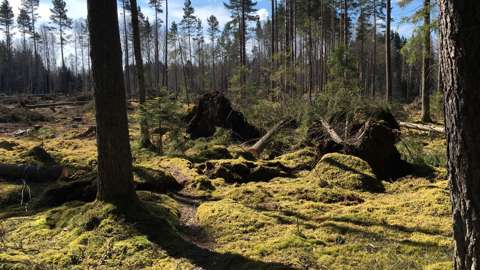
With larger concentrated volumes, the usual large-scale technique works well, but it can be problematic to manage salvage in time. With small or scattered volumes, a small-scale, mobilizable technique can be a good complement to keep up.
There are often inaccessible locations where salvage is not justifiable from, for example, an economic perspective or due to the risk of driving damage. Debarking the trees is effective in combating the beetle if done in time, but it is a time-consuming and very strenuous job.
New, smaller trials in Dalarna in the middle of Sweden with only root-cutting of windthrown trees show promising results with more than a halving of the reproduction of spruce bark beetles compared with no action.
Some experiences from the trials where windthrown trees were cut at different times and compared with uncut:
-
No shoot growth with root-cutting before May 15
-
Faster dark-colored unusable inner bark with early root-cutting
-
Earlier and more needle shedding with root-cutting
-
Fewer new beetles produced the earlier the cutting
-
No major difference between sun and shade, but more of the spruce bark beetle’s natural enemies in the shade
Thus, the habitat for the spruce bark beetle’s larvae seems to have worsened from the root-cutting. The earlier the root-cutting, the better, which also is practically good.
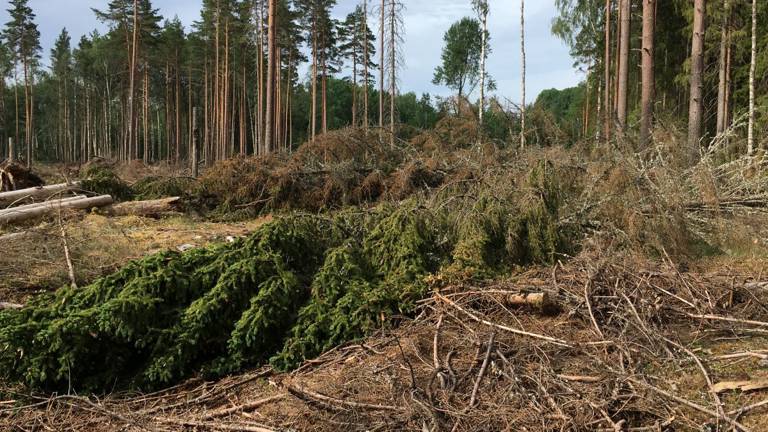
Early root-cut trees had no shoot growth and dropped their needles, while uncut or late-cut trees produced shoots and stayed green longer. Photo: Tomas Gullberg
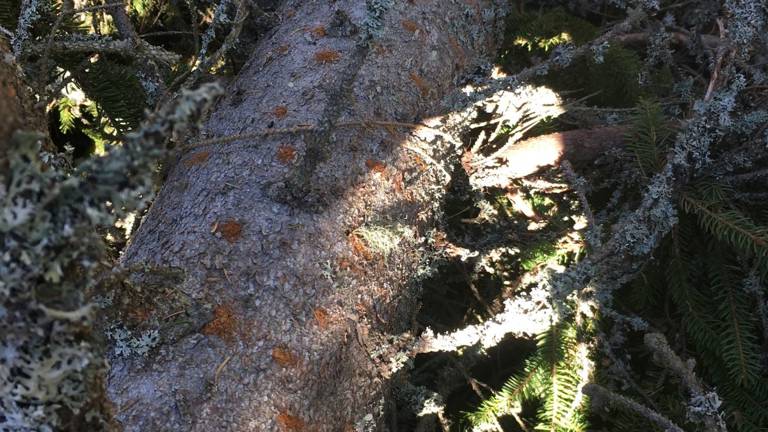
Both root-cut and non-root-cut trees were attacked during the first swarming. Photo: Tomas Gullberg
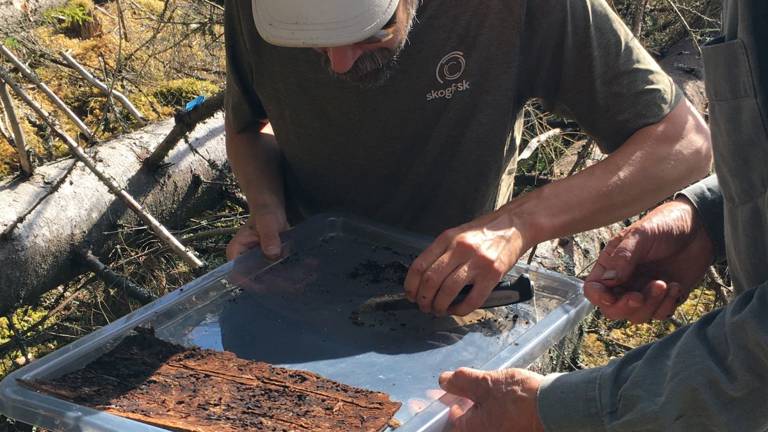
But evaluation showed that the production of new beetles was significantly lower in root-cut trees, and the earlier the cutting, the better. Photo: Tomas Gullberg
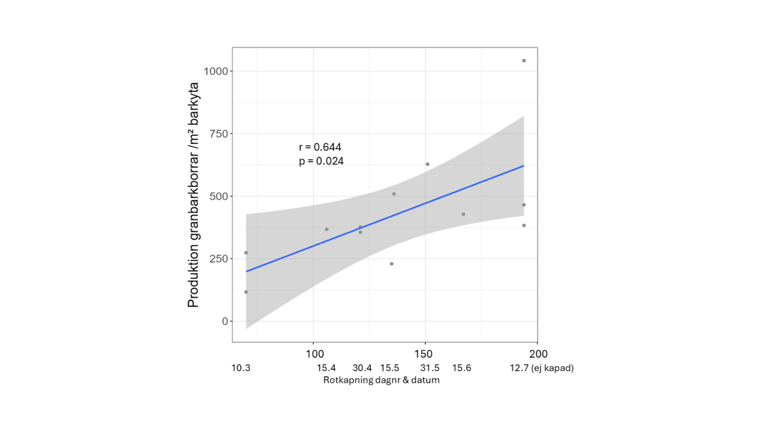
Figure 1. The number of spruce bark beetles produced per square meter of bark in relation to the timing of root-cutting. The trees at the last point represented uncut controls. (Tree diameter at breast height was about 30 cm)
In the short term, standing trees are spared the more windthrown trees we leave, since the bark beetles primarily choose windthrown trees. But with increasing spruce bark beetle populations and fewer available fresh windthrown trees, the risk will increase that even standing healthy trees will be attacked. A combination of a large population of bark beetles multiplied in windthrown trees and drought-stressed spruces can cause very extensive damage to standing trees.
Do not root-cut trees intended to become saw timber or pulpwood, as the timber quality deteriorates more quickly.
Working with storm-felled trees entails particular risks with falling root plates and trunks under tension that can spring back when cut. Therefore, special competence and experience are required. In more difficult cases with trees in multiple layers, machines should be used.
We will review and publish your comment as soon as possible.


